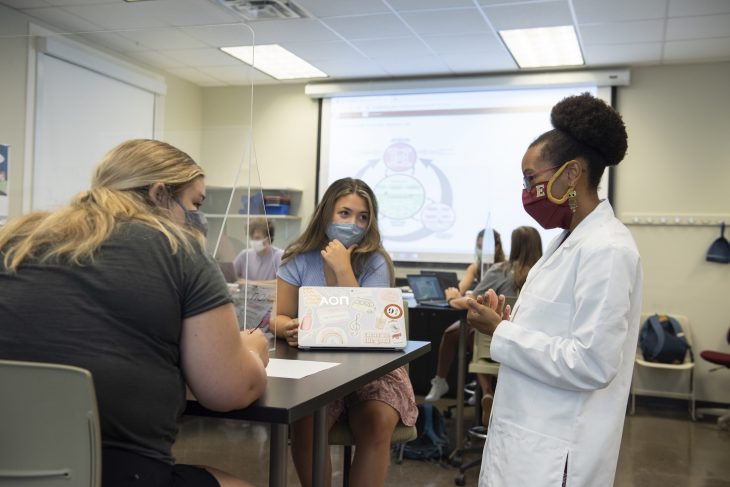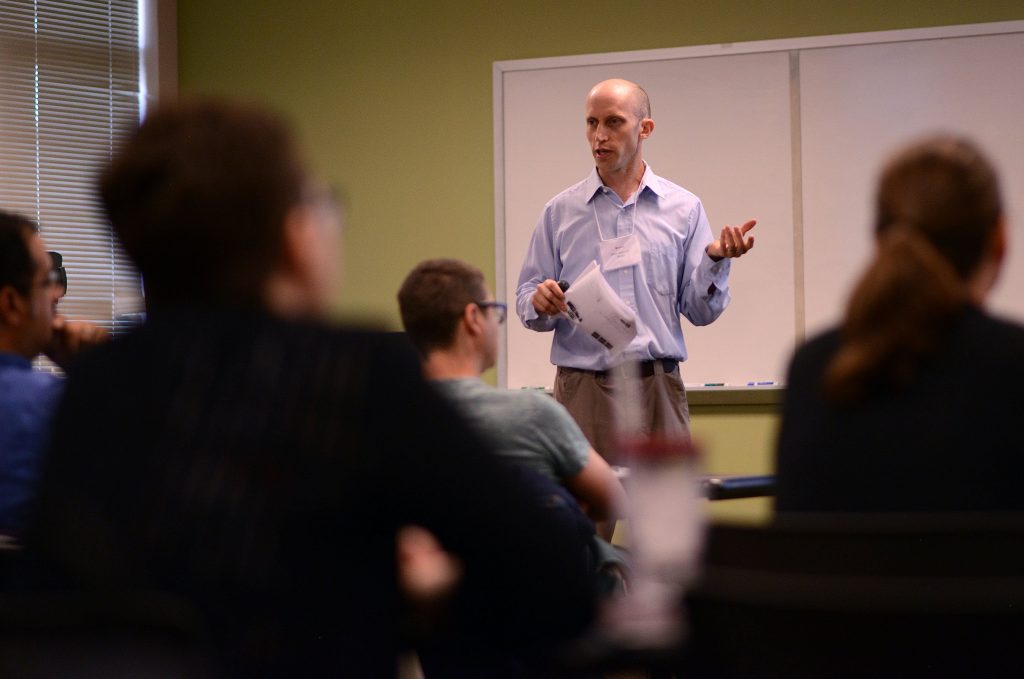According to the recently published paper, the integration of lab and lecture activities allows for a more cohesive and convenient learning experience for non-science majors seeking their lab science graduation requirement.
Several Elon Biology faculty members recently published a study exploring how the format of introduction biology courses impacts STEM and non-STEM majors.
Assistant Professor of Biology Jessica Merricks led the study, which was published this month in the Journal of College Science Teaching, along with Dave Gammon, professor of biology, and retired faculty member Kathy Gallucci. The project was inspired by their observations of nonmajors enrolled in two similar versions of “Introductory Biology for Non-majors” at Elon, a common choice for students seeking to fulfill their lab science requirement.

While studies suggest there are no major differences between the aptitude or ability of STEM and non-STEM majors, the latter are known to hold more misconceptions, have greater anxiety and feel less confident in their ability to understand scientific content. These challenges can be mitigated in courses that are thoughtfully designed to create a supportive learning environment. The researchers compared the experiences of Elon students enrolled in one of the two most common laboratory course structures: the traditional format, in which content delivery and lab skills practice occur in two distinct settings, and the integrated format, in which students experience the lecture and laboratory activities in a single session.
Mixed-methods analysis of student perceptions and learning outcomes revealed that the integrated model is significantly more effective at attracting enrollment, and at least equally effective in improving learning outcomes.

“When given a choice, students overwhelmingly choose the integrated format, citing both scheduling convenience and/or expectations about positive features related to the learning environment… Even when the integrated option results in more minutes in class, students prefer this option over the traditional format, citing more opportunities to engage in active learning, maintain attention, and apply material immediately during class,” reads the paper.
The authors note the potential of this model to serve the interests of many non-STEM students, and with well-trained instructors at the helm, it may result in positive learning experiences for a greater number of students.


